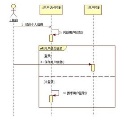Robot-based assembly in construction has emerged as a promising solution to address numerous challenges such as increasing costs, labor shortages, and the demand for safe and efficient construction processes. One of the main obstacles in realizing the full potential of these robotic systems is the need for effective and efficient sequence planning for construction tasks. Current approaches, including mathematical and heuristic techniques or machine learning methods, face limitations in their adaptability and scalability to dynamic construction environments. To expand the ability of the current robot system in sequential understanding, this paper introduces RoboGPT, a novel system that leverages the advanced reasoning capabilities of ChatGPT, a large language model, for automated sequence planning in robot-based assembly applied to construction tasks. The proposed system adapts ChatGPT for construction sequence planning and demonstrate its feasibility and effectiveness through experimental evaluation including Two case studies and 80 trials about real construction tasks. The results show that RoboGPT-driven robots can handle complex construction operations and adapt to changes on the fly. This paper contributes to the ongoing efforts to enhance the capabilities and performance of robot-based assembly systems in the construction industry, and it paves the way for further integration of large language model technologies in the field of construction robotics.
翻译:在建筑业中,基于机器人的组装已被视为解决众多挑战的一种有前途的解决方案,例如成本增加,劳动力短缺以及对安全和高效建筑流程的需求。实现这些机器人系统的全部潜力的主要障碍之一是需要针对建筑任务进行有效和高效的序列规划。当前的方法包括数学和启发式技术或机器学习方法,但这些方法在适应动态建筑环境方面存在局限性。为了扩展当前机器人系统在连续理解方面的能力,本文引入了RoboGPT,这是一种新颖的系统,它利用了ChatGPT的先进推理能力,用于基于机器人的组装并应用于建筑任务的自动序列规划。所提出的系统将ChatGPT适用于建筑序列规划,并通过实验评估展示其可行性和有效性,包括两个关于真实建筑任务的案例研究和80次试验。结果表明,基于RoboGPT的机器人可处理复杂的建筑操作,并适应变化。本文为增强建筑行业中基于机器人组装系统的能力和性能的不断努力做出贡献,并为在建筑机器人领域进一步整合大型语言模型技术铺平了道路。



